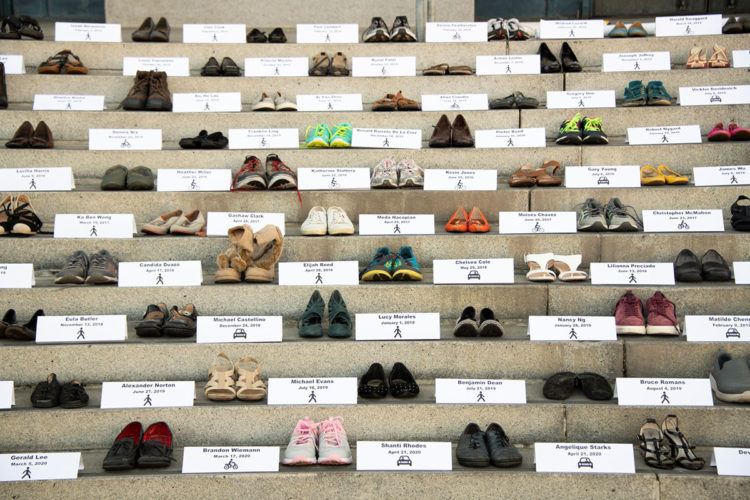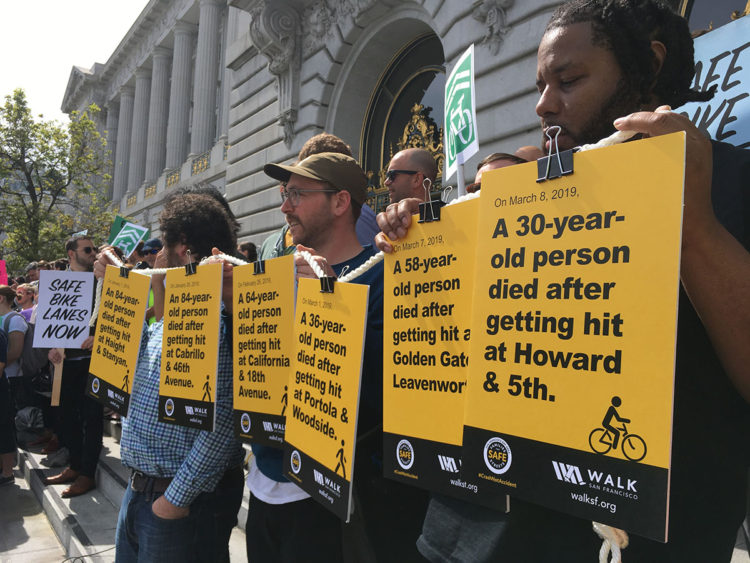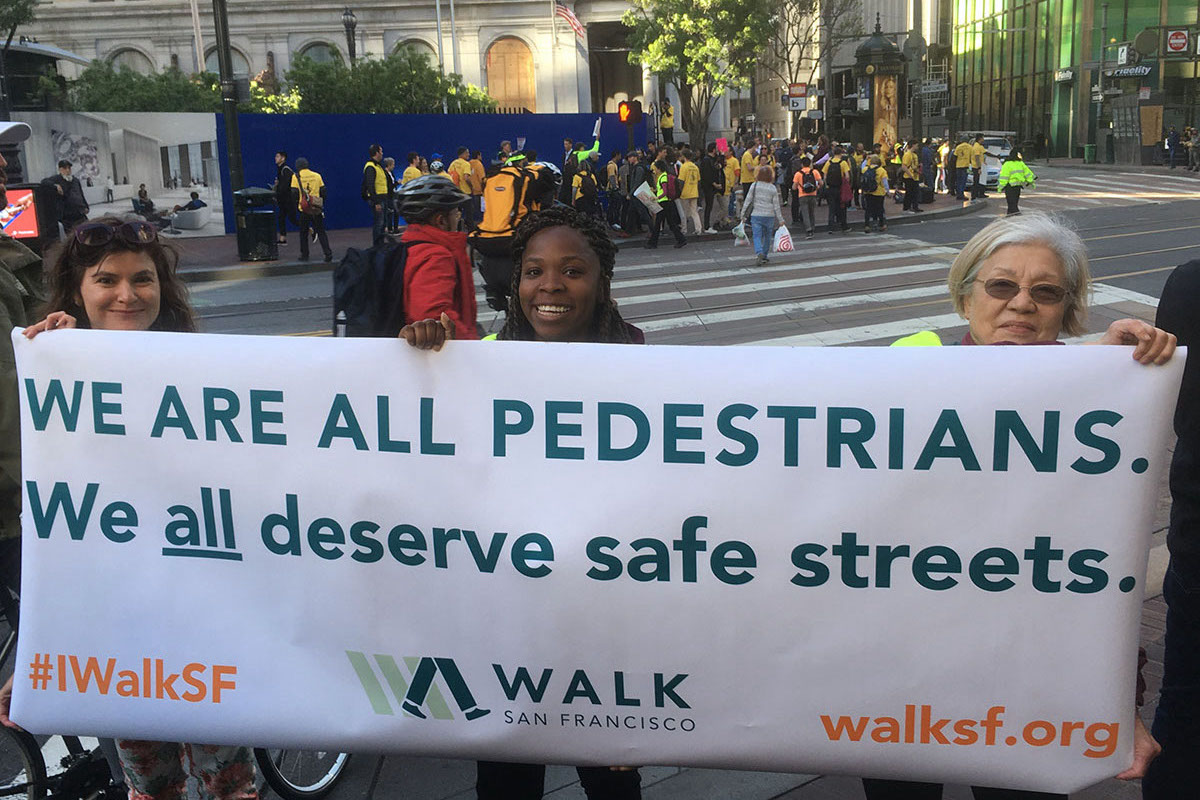
Walk San Francisco
2023 – $15,000 Climate Justice in the Bayview
2022 – $10,000 General Support
2021 – $10,000 20mph Speed Limit in the Tenderloin: Data Study
2016 – $10,000 Green Connections
2014 – $10,000 Vision Zero
2013 – $10,000 General Support
2012 – $6,000 General Support
San Francisco can and should be the safest, most walkable city in the United States. Yet every day, at least 3 people on average are hit by cars while walking in our city.
Walk San Francisco exists to change this. Walk San Francisco (Walk SF) was founded in 1998 by a small group of volunteers united by the belief that the city’s streets and sidewalks should be safe and welcoming for all.
Today, Walk SF is known as a tireless advocate in pushing for – and winning – life-saving changes across the city. Some defining wins include: 15 MPH speed zones around 181 schools; San Francisco’s second-in-the-nation commitment to Vision Zero; the removal of private vehicles from Market Street; the tax on Uber and Lyft; and groundbreaking changes to some of the city’s most dangerous streets.
Walk SF also founded and supports San Francisco Bay Area Families for Safe Streets, a group of traffic crash survivors and the loved ones of people who have been killed or injured in traffic crashes. Members offer emotional support and work together to win changes to prevent more lives from being destroyed by traffic violence. Each November, Families for Safe Streets and Walk SF hold World Day of Remembrance for Road Traffic Victims
In addition, Walk SF works to increase the number of children safely getting to school on foot, bicycle, scooter, and transit as part of the San Francisco Safe Routes to School Partnership. Walk SF also brings together the voices of the 30+ community-based organizations, nonprofits, and civic groups that make up the Vision Zero Coalition, plus leads the Senior and Disability Work Group. And throughout the year, Walk SF offers a variety of walks to both explore the pure joys of exploring the city on foot and the challenges faced due to unsafe streets.
In 2019, Walk SF launched its first-ever three-year strategic plan. The long-term goals outlined in it are to: 1) end pedestrian traffic deaths and severe injuries, and 2) increase the number of trips people take on foot.
As part of the strategic plan, Walk SF prioritized both what it works on and how it will work. Crash data shows that San Francisco’s residents living in communities of concern suffer the most from traffic violence. These are communities with the most low-income people, immigrants, communities of color, seniors, children, and people with disabilities. That is why while Walk SF works in the interest of all pedestrians in San Francisco, Walk SF prioritizes its efforts on communities and/or geographies where issues of equity are most at play.
Walk SF also focuses its outreach and education in communities and populations that have disproportionately been impacted by traffic violence and often not engaged in the community process. Walk SF works hard to ensure a community’s voice is authentically brought forward to guide advocacy efforts, and build coalitions across diverse communities. That’s why Walk SF goes much deeper in its community engagement and advocacy work in neighborhoods like the Tenderloin, where traffic violence is a daily reality for the nearly 40,000 people who live there.
Walk SF’s vision is for a San Francisco where everyone – of every age and ability – can get around safely. And the benefits of making this vision a reality ripple far beyond the precious lives that will be saved. When it is safe and inviting for many more people to walk in San Francisco, it also means reducing climate emissions. It means thriving neighborhood businesses and greater health. It means changing the fact that people of color are more likely to live, work, and walk on dangerous streets. It means stronger and more connected communities.

A memorial to the lives lost in traffic crashes in San Francisco since January 2014. From the 2020 World Day of Remembrance for Road Traffic Victims. Photo by William McLeod with permission from Walk SF.

At a March 2019 action on the steps of City Hall to shine a light on recent traffic fatalities. Photo by Walk SF.







